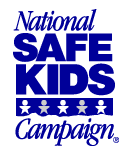|
|
||||||||
|
|

|
|

Home > Safety Tips > Special Needs
Special Needs
Nine million or 13% of U.S. children under 18 years have a special health care need. Children with developmental disabilities, both physical and psychological, have higher rates of injury. In addition, children with cognitive, emotional or social limitations have significantly higher rates of injury, which may be due in part to a lack of appropriate prevention education. Read below for more safety information for special needs children. Topics include: ATTENTION-DEFICIT HYPERACTIVITY DISORDER Kids with Attention-Deficit Hyperactivity Disorder (ADHD) get hurt more often than the average child. Boys are more likely than girls to have discipline/behavior problems and to be diagnosed with ADHD. Highly active, impulsive boys also appear to be at special risk for injury occurrence. Children with ADHD were also more likely to have been admitted to a hospital for inpatient, outpatient and emergency care. Medical bills for these children during the study period came to a total of $4,306 compared to $1,944 for children without ADHD. Beware of common dangers: Parents don’t realize that young children can drown in less than inch of water, that drinking mouthwash can cause a young child to fall into an alcohol coma, or that children can fall out of a window that is only opened 5 inches. Use visuals reminders: The "Mr. Yuk" stickers from poison prevention centers prevent many tragedies for preschoolers and their parents. This same strategy can work for older children with ADHD, who tend to be developmentally immature and have poor memories. Use stickers with phrases such as "Don't Touch!" and "Off Limits!" Put them on the power tools, the attic door, the stove, the knife drawer, or any other potential source of injury. Make rules specific and clear: Give specific instructions instead: "Before crossing the street, look left, look right, then look left again. When there are no cars, cross the street and keep looking until you reach the other side." Establish exactly what's off limits: the quarry, the roof, the windowsill, the oak tree. Make a chart of specific safety rules and post it in your child's room and in the kitchen as a daily reminder. Role play and rehearse: Develop and role-play risky scenarios with your kids Go over situations such as: "What do you do when the ball rolls into the street? What do you do when someone starts a fight with you on the playground?" Play out several options and review their possible consequences: "If you do that, what do you think might happen? What if you did this instead?" Arrange for supervision: Supervising ADHD kids is critical. Don't pair them with other ADHD kids and send them off to the park; send them with responsible older kids who can serve as role models and mentors. If you or another adult can't be around after school, enroll your kids in supervised activities such as music lessons and team sports. CHILD PASSENGER SAFETY Go to Car safety tips FALLS Children who have disabilities who are minimally mobile but who are perceived as immobile by a caregiver might be at increased risk for falling from a bed or other elevated surface. The child might be left unattended and might roll or creep to the edge. Falls are the most commonly reported injury among wheelchair users. “Tips and falls” account for 42% of incidents, making falls the leading cause of rider injury. Go to : FIRE SAFETY FOR CHILDREN WITH HEARING IMPAIRMENTS There are 28 million deaf and hard of hearing Americans who are unable to rely on the life-saving warning sound of a working smoke alarm to alert them of fire. It is crucial that this audience is aware of the availability of flashing or vibrating smoke alarms, and the importance of proper escape planning. The United States Fire Administration (USFA) encourages the hearing impaired population and their caregivers to practice the following precautionary steps: Go to fire safety tips TOYS Toys for children with special needs should not focus on a child’s disability at the expense of the child. With some modifications, children with special needs often can play with the same toys as other children around the same age, depending on developmental ability. Toys for children with special needs should be safe, durable, versatile, challenging, and engaging. For children with physical limitations look for the following features: Toys for children with hearing impairments should have: Amplified and/or adjustable volume Important features in toys for children with visual impairments include: Go to toy safety tips Links of Interest: |
|

|
|||
|
|
||||||||
